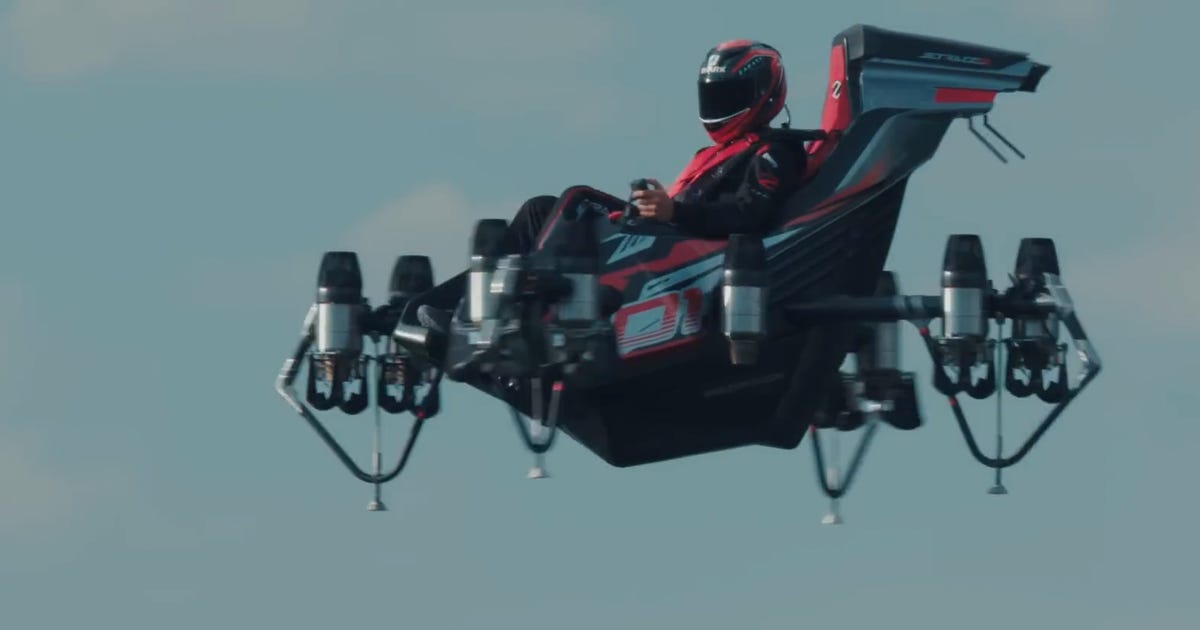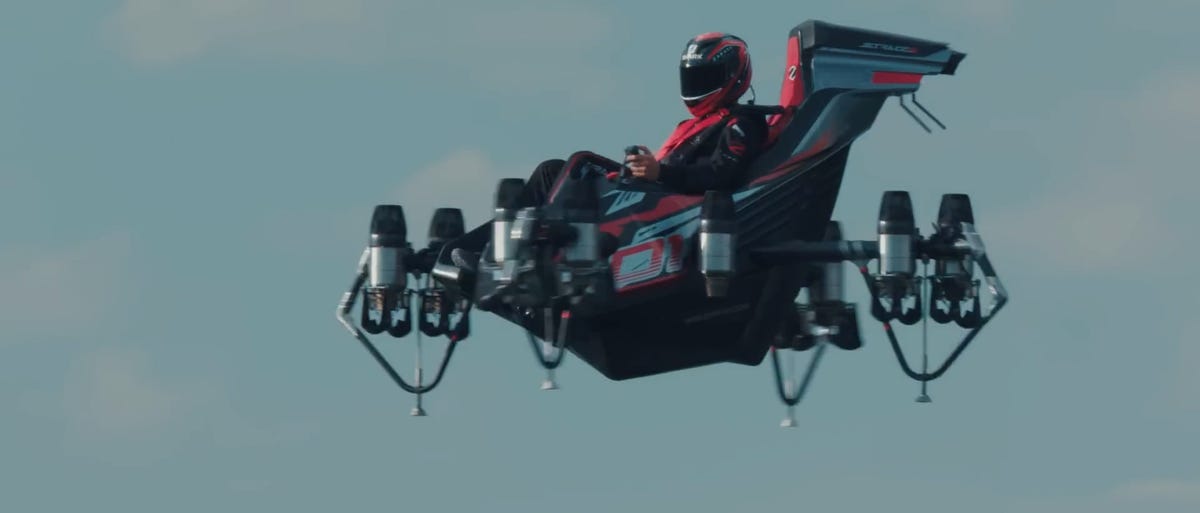
What has one seat, 10 jet engines and autonomous flight capabilities? It’s the Jetracer from Zapata.
You might be familiar with the Zapata name due to the company’s viral videos of its inventions such as the Flyboard and Flyboard Air.

The Jetracer takes flight.
Zapata
Now the company is using its experience making flying machines to branch out into mass transit. You can think of the Jetracer as a bridge technology between Zapata’s recreational vehicles and the air mobility market.
The Jetracer’s top speed is expected to be in the neighborhood of 125 to 155 miles per hour, and its max altitude is expected to be higher than 9,800 feet. However, these figures aren’t finalized, since the Jetracer is still going through testing and tweaking.
With 10 engines, Zapata says, the Jetracer can lose two and still fly.
Despite the Jetracer’s sleek and intimidating design, “It’s actually quite easy to fly,” according to Jules Birchler, Zapata’s head of business development.
That ease comes, the company says, from the Jetracer’s built-in flight controller, which is designed to prevent crashes, stabilize the craft in challenging conditions, and even allow for autonomous capabilities.
Pilots input where they want to go, and the flight controller decides how to do it. The company also released video of an unmanned Jetracer doing a barrel roll, which Birchler says was a “pre-designed stunt” using a flight simulator to figure out what inputs would be needed to have the Jetracer do a barrel roll at the push of a button.

The pilot inputs instructions to the Jetracer, and the flight controller decides how to make the maneuvers.
Zapata
In 2023, Zapata aims to bring the Jetracer to the US, where people will get their first chance to test-fly it. Eventually, the company hopes to open permanent flight centers, where the Jetracer could be rented like a Jet Ski or ATV.
Birchler also teased Zapata’s follow-up to the Jetracer, called the Air Scooter, which features a hybrid electric and combustion engine and a longer flight time. He said the Air Scooter is likely to launch toward the latter half of 2023.
To see the Jetracer in action, check out the video in this article.
